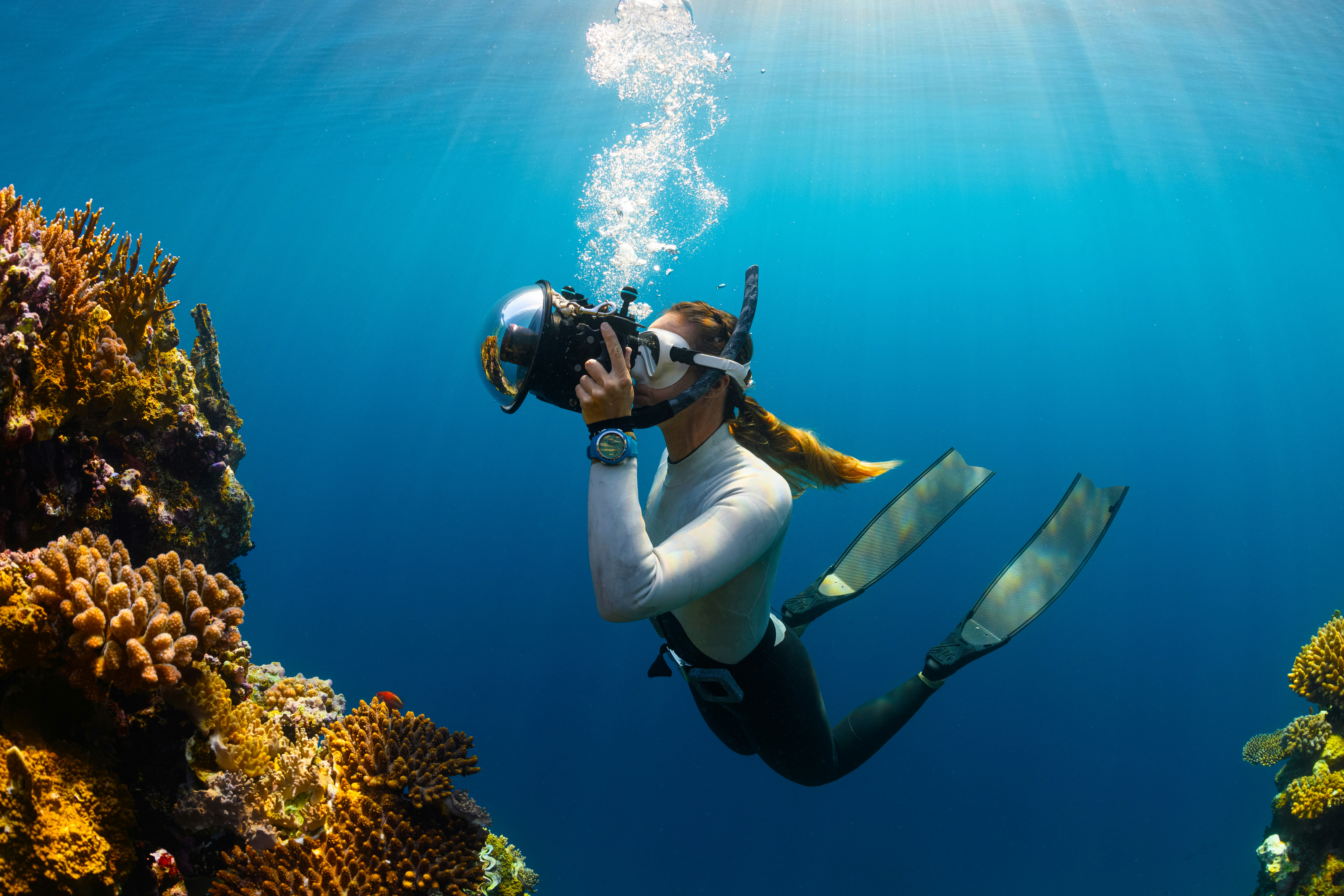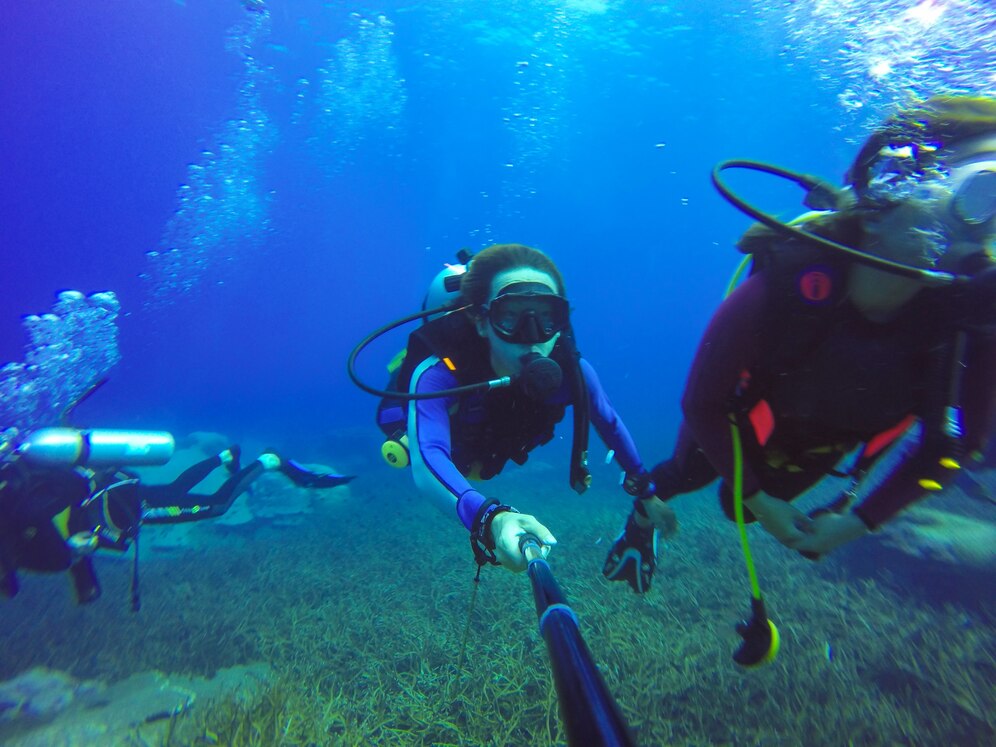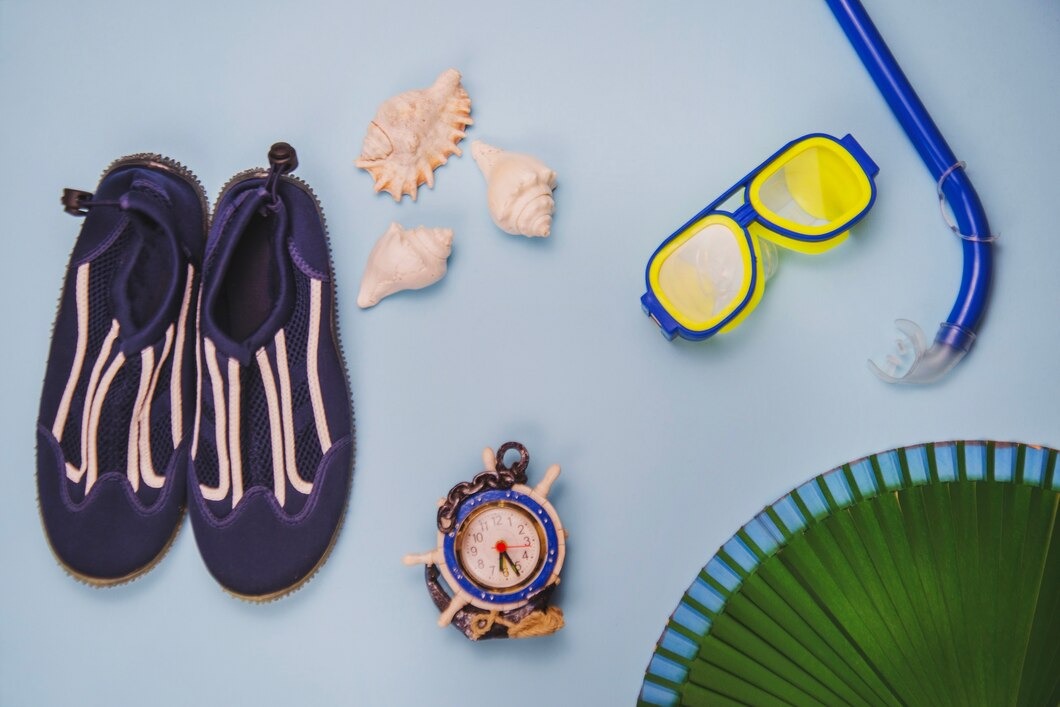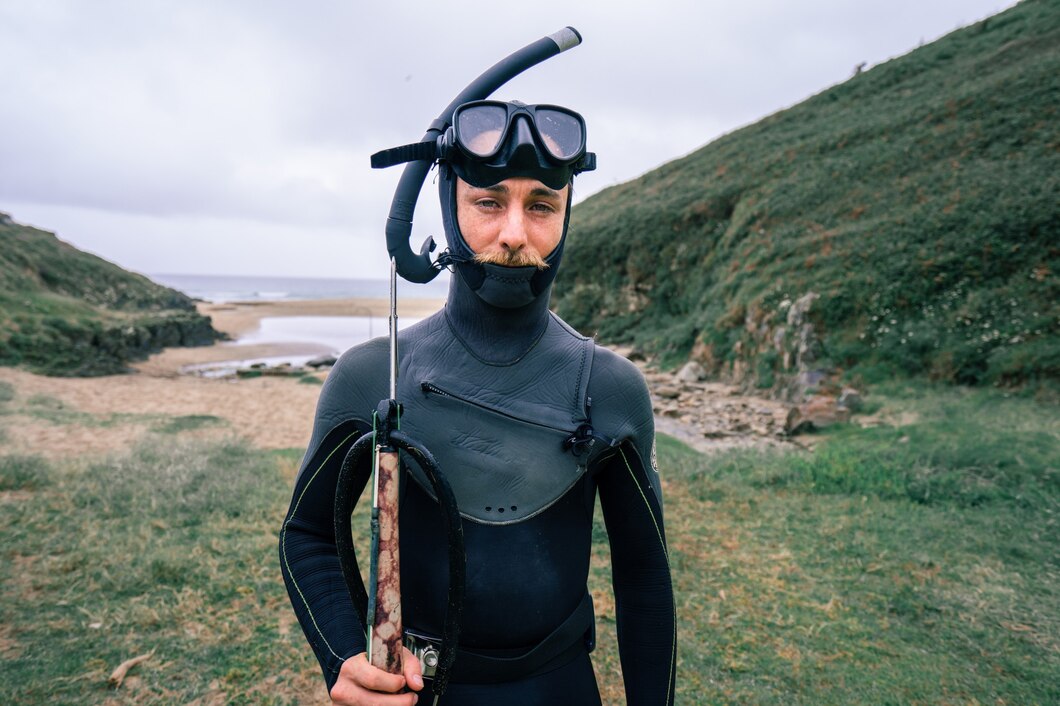
How to Prepare for a Scuba Diving Trip
Scuba diving lets you explore the underwater world, from colourful coral reefs to hidden shipwrecks. Proper preparation is key for a safe and fun experience. Whether you’re new to diving or want to improve your skills, this beginner diving guide has all the basics. It includes essential scuba diving tips and a complete scuba gear checklist to help you prepare for your next adventure.
Quick Guide: How to Prepare for a Scuba Diving Trip
- Understand the Basics of Scuba Diving:
- Learn breathing techniques to prevent decompression sickness.
- Practice buoyancy control for smooth underwater movement.
- Master hand signals to communicate with your dive buddy.
- Get certified by organizations like PADI, BSAC, or SSI.
- Research destination-specific certification requirements.
- Plan Your Scuba Diving Trip:
- Best Destinations:
- Beginners: Malta, Red Sea (Egypt), Canary Islands.
- Intermediate: Thailand, Indonesia, Maldives.
- Advanced: Great Barrier Reef (Australia), cenotes (Mexico).
- Research water temperature, visibility, currents, and marine life.
- Book dive packages early, especially during peak seasons.
- Scuba Gear Checklist:
- Essential Gear:
- Mask & snorkel for clear visibility.
- Wetsuit/drysuit based on water temperature.
- Fins for efficient movement.
- Buoyancy Control Device (BCD) for stability.
- Regulator & octopus for air delivery.
- Dive computer to monitor depth and safety stops.
- Weight system for neutral buoyancy.
- Additional Accessories:
- Underwater torch for night dives.
- Surface Marker Buoy (SMB) for visibility.
- Dive knife for safety.
- Reef-safe sunscreen to protect marine life.
- First-aid kit & spare parts for emergencies.
- Prepare Physically and Mentally:
- Physical Preparation:
- Cardiovascular fitness for breathing efficiency.
- Strength and flexibility for swimming and handling equipment.
- Stay hydrated and avoid alcohol before diving.
- Mental Preparation:
- Practice breathing techniques to stay calm underwater.
- Refresh your skills and review safety protocols.
- Communicate with your buddy using hand signals.
- Pro Tip:
- Do yoga or stretching before diving to boost flexibility.
- Follow Scuba Diving Safety Tips:
- Before the Dive:
- Inspect equipment and do a buddy check.
- Review the dive plan and emergency procedures.
- Equalize your ears regularly.
- During the Dive:
- Breathe slowly and deeply to conserve air.
- Monitor your air supply and dive computer.
- Maintain proper buoyancy to avoid damaging marine life.
- Stay close to your buddy.
- After the Dive:
- Ascend slowly and follow safety stops.
- Rinse your gear thoroughly.
- Rest for at least 24 hours before flying.
- Dive Responsibly and Sustainably:
- Use reef-safe sunscreen.
- Maintain neutral buoyancy to avoid damaging coral.
- Avoid touching or disturbing marine life.
- Join beach and ocean clean-ups.
- Support eco-certified dive centres.
Pro Tip:
If you’re renting gear, always inspect it before diving to ensure it functions properly.
Important Tip:
Never dive alone. Even experienced divers should always have a buddy for safety reasons.
1. Understanding the Basics of Scuba Diving
Before diving into the deep blue, you must understand scuba diving basics. Knowing about pressure, buoyancy, and breathing techniques will boost your confidence underwater.
Why Training is Essential
- Scuba diving needs special breathing techniques. These help manage air use and avoid issues like decompression sickness.
- Understanding buoyancy control allows for smoother, more effortless movement underwater.
- Basic hand signals are essential for communicating with your dive buddy.
Where to Get Certified
- PADI (Professional Association of Diving Instructors) – The most widely recognised certification worldwide.
- BSAC (British Sub-Aqua Club) – A UK-based organisation offering internationally respected training.
- SSI (Scuba Schools International) – A flexible alternative with digital training options.
Pro Tip:
If you’re diving abroad, research the certification requirements of your chosen destination. Some dive sites have strict regulations on training levels and experience.
2. Planning Your Scuba Diving Trip

Proper planning ensures a hassle-free and enjoyable experience. From choosing the right destination to understanding local dive conditions, preparation is key.
Selecting the Perfect Dive Destination
- For beginners: Malta, the Red Sea (Egypt), and the Canary Islands offer clear waters and mild currents.
- For intermediate divers: Thailand, Indonesia, and the Maldives provide diverse marine life and stunning coral reefs.
- For advanced divers: Australia’s Great Barrier Reef and Mexico’s cenotes offer thrilling underwater experiences.
Researching Dive Conditions
- Water temperature – Affects wetsuit thickness requirements.
- Visibility – Impacts underwater navigation and wildlife spotting.
- Currents – Strong currents require advanced training and experience.
- Marine life – Understanding the local ecosystem enhances your experience.
Pro Tip:
Reserve your dive package early, especially during peak seasons.
3. Scuba Gear Checklist – What to Pack

Having the right gear is crucial for comfort and safety. While many dive centres provide rental equipment, bringing your own ensures a better fit and reliability.
Essential Gear:
- Mask & Snorkel – Ensures a comfortable fit and clear visibility.
- Wetsuit/Drysuit – Choose based on water temperature (5mm for temperate waters, drysuit for cold conditions).
- Fins – Properly fitted fins help with efficient movement and reduce fatigue. Buoyancy Control Device (BCD) – Helps control buoyancy and provides stability.
- Regulator & Octopus – Delivers air from the tank and includes a backup second stage.
- Dive Computer – Tracks depth, dive time, and safety stops.
- Weight System – Essential for maintaining neutral buoyancy.
Additional Accessories:
- Underwater Torch – Essential for night dives or exploring wrecks.
- Surface Marker Buoy (SMB) – Increases visibility to boats and surface support.
- Dive Knife – Useful for cutting fishing lines or dealing with entanglements.
- Reef-Safe Sunscreen – Protects both your skin and the environment.
- First-Aid Kit & Spare Parts – Extra O-rings, fin straps, and silicone grease can be lifesavers.
Pro Tip:
If you’re renting gear, inspect everything before the dive to ensure proper functionality and comfort.
4. Preparing Physically and Mentally
In addition, diving needs both physical preparation and psychological health. If you are in good health and comfortable under the water, you will have the best experience.
Physical Preparation:
- Cardiovascular Fitness – Aids in regulating breathing efficiency and endurance.
- Strength & Flexibility – You need strength in your core and legs to carry equipment and swim against currents.
- Hydration & Nutrition – Stay off alcohol in front of the dive and keep adequate hydration.
Mental Preparation:
- Breathing Techniques — Breathing as required and controlling your mind helps stave off panic underwater.
- Knowledge & Training – Familiarize yourself with safety protocols and refresh your skills before diving.
- Buddy Communication – Practice hand signals and emergency responses with your dive buddy.
Pro Tip:
Consider a pre-dive yoga or stretching session to maintain flexibility and decompress before you hit the water.
5. Scuba Diving Safety Tips

Diving properly always has to be a priority. Safety is the key aspect of diving. So if you follow these scuba diving tips, you will have a smoother, more pleasant experience!
Before the Dive:
- Check your equipment and conduct a buddy check.
- Review the dive plan, including depth limits and emergency procedures.
- Equalise your ears frequently to prevent discomfort.
During the Dive:
- Breathe slowly and deeply to conserve air.
- Monitor your air supply and dive computer regularly.
- Maintain proper buoyancy to avoid damaging marine life.
- Stay close to your dive buddy and follow the guide’s instructions.
After the Dive:
- Ascend slowly to prevent decompression sickness.
- Follow safety stops to allow nitrogen to dissipate.
- Rinse the gear thoroughly to remove salt and debris.
- Rest for at least 24 hours before flying to avoid decompression sickness.
Pro Tip:
Avoid touching marine life, not only for conservation reasons but also for your own safety.
6. Environmental Responsibility – Diving Sustainably
Protecting marine ecosystems should be a priority for every diver. Following eco-friendly diving practices ensures future generations can enjoy the same underwater wonders.
How to Dive Responsibly:
- Use reef-safe sunscreen to prevent coral damage.
- Maintain neutral buoyancy to avoid contact with fragile coral reefs.
- Never touch, chase, or feed marine animals.
- Participate in beach and ocean clean-ups to reduce plastic pollution.
- Support responsible dive operators who follow conservation guidelines.
Pro Tip:
Choose eco-certified dive centres that promote marine conservation initiatives.
FAQs: How to Prepare for a Scuba Diving Trip
- What certifications do I need for scuba diving?
You’ll need a certification from organisations like PADI, BSAC, or SSI. The Open Water Diver certification is the most common entry-level qualification. - What essential scuba gear should I pack?
Key items include a mask and snorkel, wetsuit or drysuit, fins, buoyancy control device (BCD), regulator, dive computer, and a weight system. - How can I physically prepare for a scuba diving trip?
Improve cardiovascular fitness, build strength and flexibility, and practice breathing techniques. Stay hydrated and avoid alcohol before diving. - What are the top safety tips for scuba diving?
Always do a buddy check, follow the dive plan, ascend slowly, and make safety stops. Never hold your breath and monitor your air supply regularly. - How can I dive sustainably and protect marine life?
Use reef-safe sunscreen, maintain neutral buoyancy to avoid damaging coral, and never touch or disturb marine animals. Support eco-certified dive operators.
Final Thoughts: Get Ready for Your Next Dive
Getting ready for a scuba diving trip is more than just packing. It needs planning, the right gear, and a solid focus on safety. Follow this beginner diving guide, use our scuba gear checklist, and apply key scuba diving tips. You’ll be set for an exciting underwater adventure.
Are you ready to take the plunge? Share your upcoming diving destinations and experiences in the comments below!


